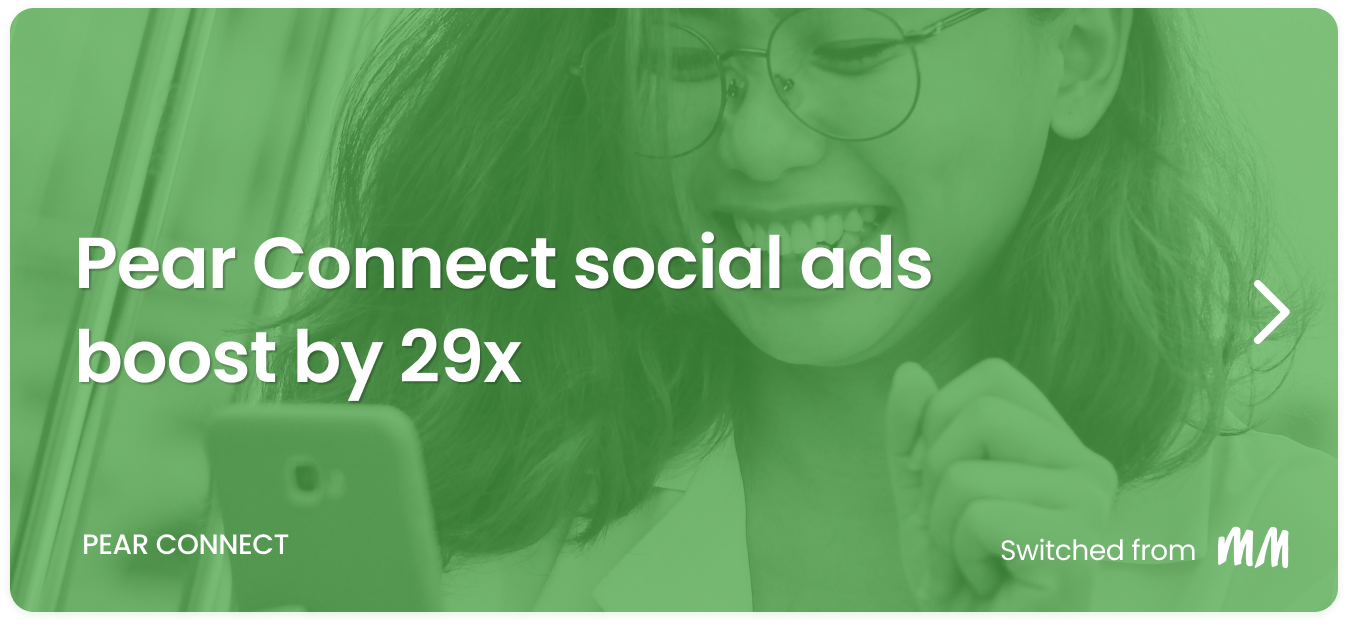Case Studies ![]() Brand Using Insights & Data
Brand Using Insights & Data
*Brand uses data & actionable insights to
run a true retail ecommerce strategy
After making everything shoppable with Pear’s shoppable tools, *Brand wanted to invest more in their retail marketing efforts. They weren’t comfortable doing so without the data and insights to run retail marketing like they run their DTC, however, which allowed them to set up specific targeting, build custom audiences, build lookalike audiences, and leverage quick feedback loops to make better mid-campaign decisions.
| GETTING STARTED
- *Brand started to invest more in media as they grew and aimed to bring their DTC playbook to retail.
- *Brand built out a pixel structure and strategy. They shared their main pixel with Pear, along with a second pixel for their Store Locator.
- *Brand built out a UTM structure and strategy to know what they were tracking and why. This allowed them to capture insights on product, retailer, geo, campaign, platform, copy, creative, CTA, and audiences.
*Brand then analyzed the learnings from their onsite traffic, particularly their Retailer Share of Voice (which retailers were selected for which products), to inform their promotional and incentive efforts, as well as trade marketing. This helped them drive sales velocity at one of their major retail partners.
*Brand also worked with Pear to regularly download inventory pulls to see where their flagship product was available for purchase on any given day. This information was used by the merchandising team to determine stock levels and identify areas requiring more boots-on-the-ground attention, as well as by their marketing team to target geos with ample inventory.
Then, once they were ready to run retail marketing, *Brand started setting up campaigns to test and learn what would perform best, allowing them to reallocate budget accordingly.
| INITIAL TESTS
*Brand ran tests and tracked UTMs for the following:
- Test 1a - Social platforms and budget - testing which platform would perform the best across Facebook, Instagram, TikTok, and Snap and how that could inform their budget.
- *Brand allocated 10% of their budget and measured, by UTM, which platform worked best.
- Meta performed 2.7x better for down-funnel activity (clicks to a retailer).
- With the remaining 90% of their budget, 75% went to Meta, and that campaign performed 2x better than the previous campaigns with this strategy.
- Test 1b - Social platforms and geo - taking Test 1a one step further to understand how platforms perform by geo and how that could change their strategy.
- *Brand looked at the insights for both platforms and geos and learned that in California, TikTok was as effective as Meta.
- For California, their budget was then split 50/50 between the two platforms.
- California then became the most successful state in the campaign.
- Test 2 - Customer service - *Brand wanted to better understand which products and retailers were causing the most customer frustrations or customer service issues.
- *Brand was already including a link to their store locator in response to many of their customer complaints, so they trained their staff to append a UTM to the link to help with tracking.
- After one quarter, they analyzed the data and noticed there were a few outliers in terms of product and retailers that were causing the most headaches.
- *Brand sent the sales team in to address and resolve issues with their retail partners.
- Test 3 - Custom audiences - Pear integrates with every ad platform, which allowed *Brand to build custom audiences and test them against their purchased or owned audiences.
- *Brand retargeting a purchased Trade Desk audience, their brand.com visitors, and a Pear audience to measure the ROI of each.
- The Trade Desk purchased audience performed 5x better than retargeting their brand.com visitors.
- The Pear audience performed 3x better than The Trade Desk purchased audience.
- *Brand subsequently kept targeting the Pear audience more and more, and saw their overall CTR 7x over six months.
- Test 4 - Optimized campaigns - *Brand wanted to optimize campaigns for the top, middle, and bottom of the funnel.
- *Brand started by running awareness ads and saw 1-4% CTR.
- They duplicated that campaign but optimized for Retailer Visit, and saw a 12% CTR automatically without any additional work from their team.
*Brand name redacted for confidentiality

3x improvement
when targeting custom Pear audience

12% clickthrough rate
when optimizing for Retailer Visit



